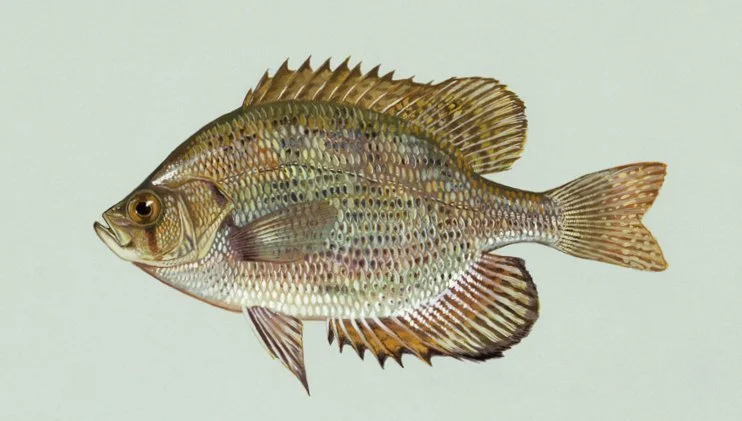fish
TEXAS LOGPERCH
The Texas Logperch (scientific name: Percina carbonaria) is a long, slender fish with yellow or olive-yellow scales and brown tiger-like stripes along its body. The Texas Logperch has a distinct black dot at the base of its tail and a small snout, small mouth, and small eyes.
It prefers clear, swift water with rocky or sandy substrate. Its diet consists of invertebrates, which it hunts by flipping over stones with its snout. It appears that Logperches are not especially picky when foraging and that they are actually very opportunistic feeders.
While the common Logperch is not currently listed as a threatened or endangered species, humans should be aware of our negative impact on the species and the ways in which we can minimize this impact; most notably by limiting the construction of dams, increasing oxygen levels in the tailwaters of existing dams, limiting the number of predatory gamefish stocked, decreasing the amount of silt and debris deposited in streams, and monitoring nitrite levels in common Logperch habitats.
SUNFISH
Centrarchid Sunfish (scientific name: Lepomis) are a family of freshwater ray-finned fish. The Centrarchid family comprises 38 species of fish, 34 of which are currently living, including the Orangespotted Sunfish, Longear Sunfish, Bluegill, Pumpkinseed, Green Sunfish, and Redear Sunfish. All species in the family are native to only North America.
Sunfish prefer clear, warm, and slower moving water, and are commonly found in habitats such as lakes, ponds, medium to low flow streams, rivers, and swamps. They also prefer to live in and around aquatic vegetation so they can get adequate coverage from predators. These fish primarily feed on small insect larva, small crayfish, and sometimes small fish or frogs.
Most Sunfish are valued for sport fishing and have been introduced in many areas outside their original ranges, sometimes becoming invasive species. While edible, they are not commercially marketed as food fish.



